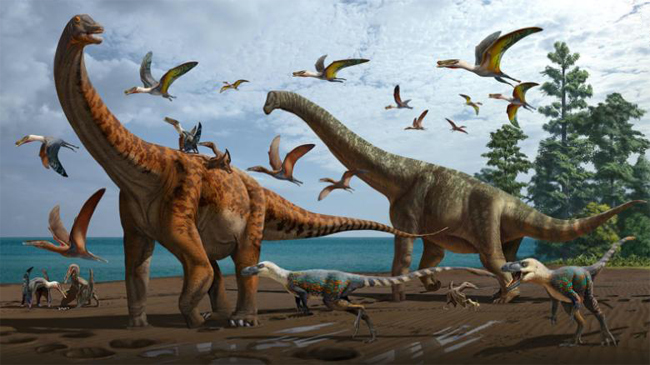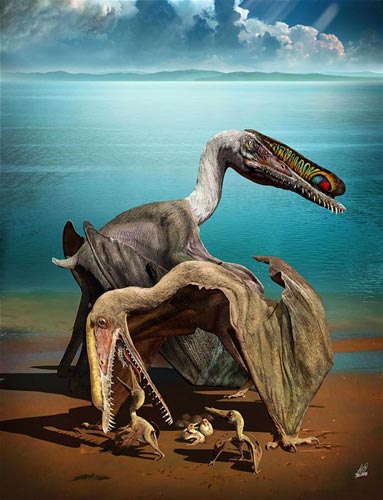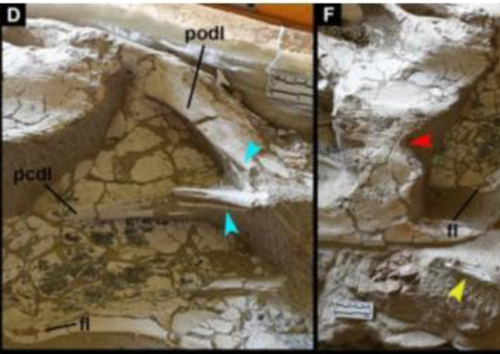Hamipterus and Dinosaur Illustrations
Recently, Everything Dinosaur team members produced a blog article discussing the first dinosaurs to be named and described from the Shengjinkou Formation located in the Xinjiang Uygur Autonomous Region, China. Today, we pay tribute to Zhao Chuang, the scientific illustrator who provided a life restoration of these newly described sauropods and who had earlier illustrated Hamipterus, a pterosaur known from the same strata.

Spectacular Artwork
Chinese illustrator and palaeoartist Zhao Chuang created the spectacular artwork that brought to life some of the vertebrate biota associated with the Lower Cretaceous Shengjinkou Formation of north-western China. As an artist at the Peking Natural Science-Art Organisation (PNSO), he has worked on numerous scientific publications and papers helping to illustrate prehistoric animals that are the subject of scientific research. He is also responsible for the stunning artwork associated with PNSO prehistoric animal models and figures.
In 2017, Zhao Chuang was commissioned to provide a life reconstruction of the pterosaur nesting colony that was due to be described in a research paper published in the academic journal “Science”.

Sauropod Fossil Discoveries
With the discovery of sauropod fossil bones either in association with Hamipterus pterosaur fossils or in close proximity, Zhao Chuang cleverly combined an image he had painted when describing the Hamipterus bonebed with a new painting showing the two newly described dinosaurs from the same geological formation.
In keeping with the science behind the illustrations, the artist brought together an image of pterosaurs and their offspring with the sauropod illustration. The newly described sauropod species, Silutitan sinensis, Hamititan xinjiangensis and fossils from the hip region of an as yet unnamed species, were all collected from different sites which are 2 to 5 kilometres apart. The horizon where the cervical vertebrae used to describe Silutitan sinensis were found is particularly rich in Hamipterus pterosaur fossils, although all the sauropod sites showed evidence of the presence of Hamipterus remains.
Resting up against one of the large neck bones of Silutitan, the research team discovered a fragment of a lower jaw from a flying reptile. As Hamipterus (H. tianshanensis), is the only pterosaur known from this region and as the bone fragment was similar to more complete Hamipterus specimens, the authors of the scientific paper assigned this bone to the Hamipterus taxon.

The association of pterosaur fossils with sauropod remains has not been reported in scientific literature often. However, it is not clear if there were any more specific palaeoecological interactions between these taxa.
The close association of the fossil remains might just be due to taphonomy (the fossilisation process). Although it is intriguing to imagine a colony of nesting Hamipterus being disturbed as two giant sauropods roam through the nesting ground, just as the stunning illustration from Zhao Chuang depicts.
Everything Dinosaur’s 2017 post about the discovery of the Hamipterus nesting colony: Hamipterus Nesting Ground Discovered.
To read our recent article about the newly described sauropod taxa from Xinjiang Uygur Autonomous Region: Two New Sauropods from the Lower Cretaceous of North-western China.
To view the range of PNSO prehistoric animal models available from Everything Dinosaur: PNSO Age of Dinosaurs Models and Figures.

